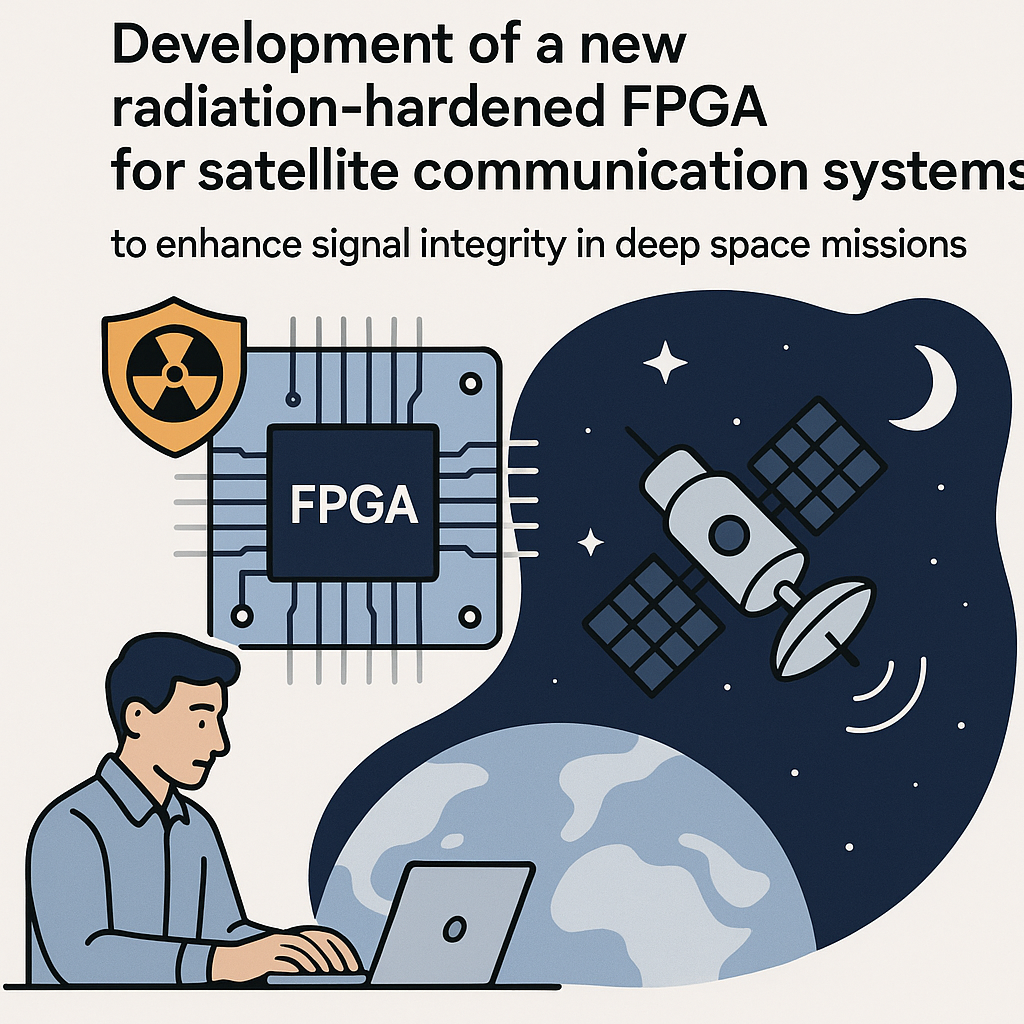Introduction
The advancement of satellite communication systems is crucial for deep space missions. As these missions venture further from Earth, the need for reliable and robust communication increases. This post explores the development of a new radiation-hardened FPGA (Field-Programmable Gate Array) designed specifically to enhance signal integrity in satellite communication systems operating in extreme conditions.
The Importance of Radiation-Hardened FPGAs
Radiation-hardened FPGAs are essential for space applications due to the following reasons:
- Protection Against Radiation: Space environments expose electronic components to high levels of radiation, which can cause malfunctions or failures in standard FPGAs.
- Reliability: These specialized FPGAs are designed to withstand radiation effects, ensuring consistent performance over long durations.
- Flexibility: FPGAs provide the ability to reconfigure hardware functionality, allowing for updates and changes in mission requirements without needing complete hardware replacement.
Challenges in Deep Space Communication
Deep space missions face unique challenges that can impact communication:
- Signal Attenuation: As signals travel vast distances, they weaken, making it challenging to maintain integrity.
- Interference: Cosmic radiation and other environmental factors can introduce noise and distort signals.
- Latency: The time delay in signal transmission can affect real-time communications and data retrieval.
Key Features of the New Radiation-Hardened FPGA
To address these challenges, the newly developed radiation-hardened FPGA incorporates several innovative features:
- Advanced Error Correction: This FPGA includes robust error detection and correction algorithms to ensure data integrity even in the presence of interference.
- Improved Signal Processing: Enhanced signal processing capabilities allow for better handling of weakened signals, improving clarity and reliability.
- Dynamic Reconfiguration: The ability to reconfigure the FPGA during a mission enables adaptive responses to changing conditions or requirements.
- Low Power Consumption: Designed to operate efficiently, this FPGA consumes less power, which is critical for long missions where energy resources are limited.
Development Process
The development of the new radiation-hardened FPGA involved several stages:
- Research and Design: Extensive research was conducted to identify the specific radiation environments and communication needs of deep space missions.
- Prototyping: Initial prototypes were created to test the design, focusing on performance under simulated space conditions.
- Testing: Rigorous testing was conducted, including exposure to radiation and extreme temperatures, to validate the FPGA’s resilience and functionality.
- Iteration: Feedback from testing led to multiple iterations, refining the FPGA’s features and performance.
Applications in Satellite Communication Systems
The new radiation-hardened FPGA is designed to be integrated into various satellite communication systems, including:
- Scientific Satellites: Used for data collection and transmission from research instruments in space.
- Navigational Satellites: Enhancing the reliability of signals used for navigation and positioning.
- Communication Satellites: Improving the quality of data relay for deep space missions and communication with Earth.
Future Prospects
The development of this radiation-hardened FPGA opens doors to new possibilities in satellite communication systems:
- Enhanced Deep Space Missions: Improved communication reliability can lead to more complex and ambitious missions beyond our solar system.
- Increased Research Opportunities: Reliable data transmission allows for more extensive scientific research and exploration.
- Commercial Applications: The technology may find applications in terrestrial communication systems, particularly in areas with high levels of interference.
Conclusion
The development of a new radiation-hardened FPGA marks a significant advancement in satellite communication systems, enhancing signal integrity for deep space missions. By addressing the unique challenges posed by the harsh space environment, this technology promises to improve the reliability and effectiveness of communications, enabling more ambitious exploration of our universe. As we look to the future, the integration of such advanced technologies will be vital for the success of space missions and the scientific discoveries that await.



